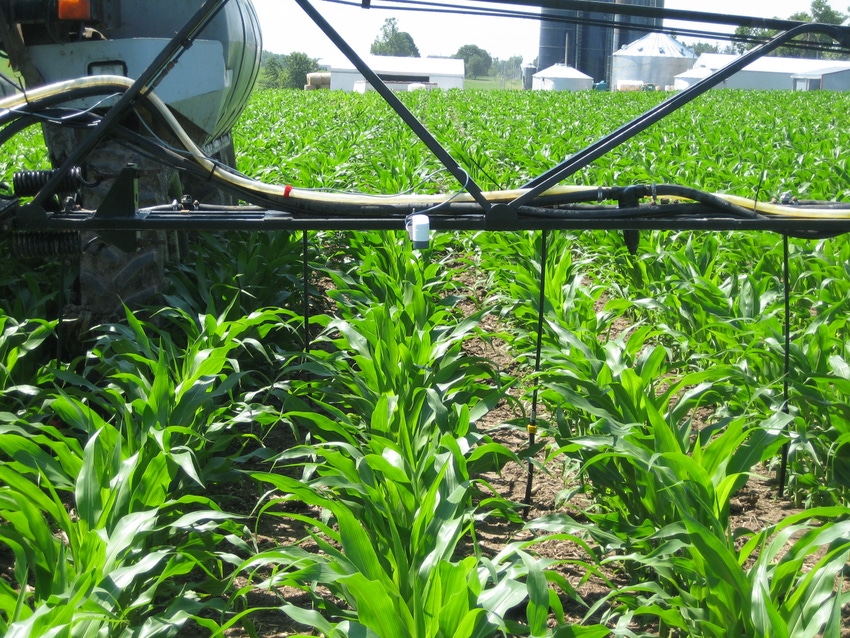April 11, 2018

By George Watters, Agronomy Manager, Winfield United
Source: Winfield United
Historically, many farmers have applied all their fertilizer in late fall or early spring. Although this practice can provide a sound foundation for crop growth, nitrogen and other key nutrients can be left vulnerable to environmental loss when applied all at once.
Lost fertilizer results in wasted input and potential harm to the environment. Answer Plot research suggests that spoon-feeding fertilizer throughout the growing season may result in a yield boost, because applying smaller amounts of nutrients when plants need them is more efficient from a plant uptake and use perspective.
Research backs the benefits
Data from 2016 Answer Plot trials showed a 7.4 bushel per acre yield advantage in corn when a portion of the total nitrogen application was delayed until the V10 growth stage.1 The crop’s need for nitrogen increases rapidly toward the time of tasseling, so it makes sense that a later application would result in a yield bump as the plant begins shifting resources to fill out its ear.
A recent study by Purdue University found that modern corn hybrids have a higher demand for nitrogen later in the season, and thus may more likely benefit from a split application.2 Response-to-nitrogen scores from Answer Plot trials can help identify corn hybrids that may benefit from spoon-feeding later in the season.
Start with sampling
Any sound fertilizer plan should be based on soil analysis from a quality laboratory. Soil testing guides application of crop nutrients and provides insight into the nutrient status of a field. Once you know what nutrient levels are in your soil, you can start optimizing your fertilization program.
Starter fertilizers like OptiStart help provide a solid foundation for early plant growth by placing nutrients close to young roots for improved uptake. This promotes more vigorous early-season growth so plants are more tolerant to stress. Answer Plot research has shown up to a 7 bushel per acre advantage in corn when starter fertilizers are used, especially in colder soils.3
An in-season tissue test will indicate real-time nutrient levels in the plant, which can guide additional fertilizer needs as the season progresses to help protect yield potential. Contact your local WinField United retailer to help develop a season-long fertilization program.
With the growing season on the horizon, we’re here to help you with your holistic plant nutrition plan. Next, we’ll explore how modeling programs can help manage nutrients and the importance of micronutrients in your fertilization program. We’ll continue to dig into all aspects of plant nutrition throughout the year right here on the Growing Knowledge blog, so be sure to check back for more plant health tips.
You May Also Like




